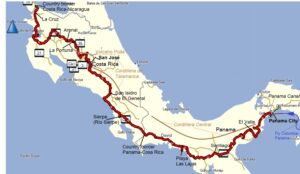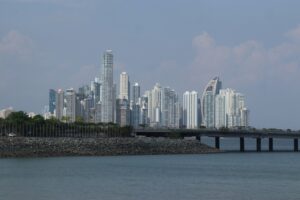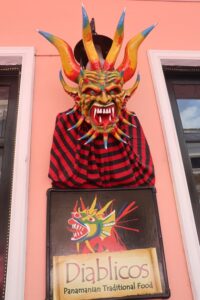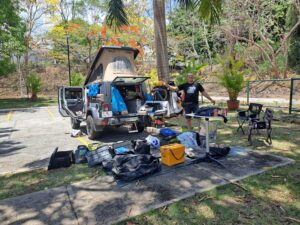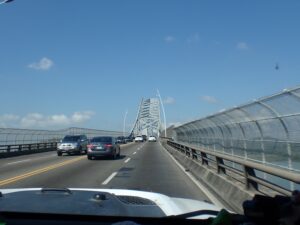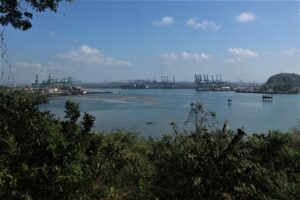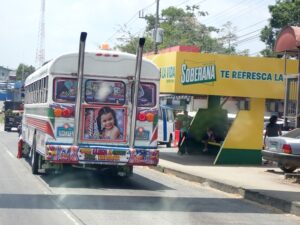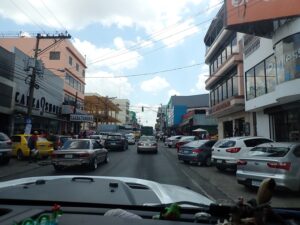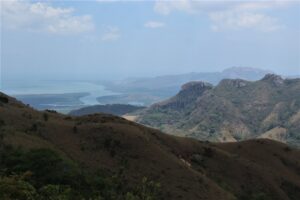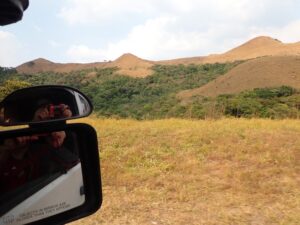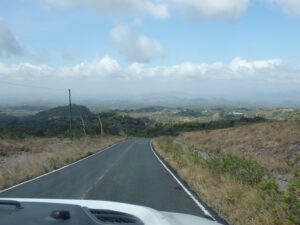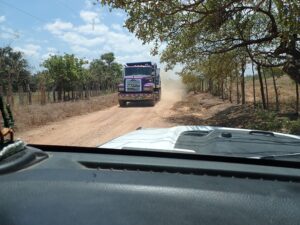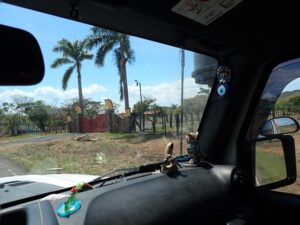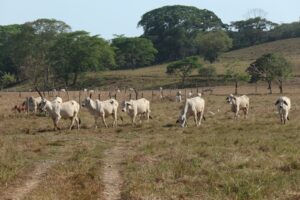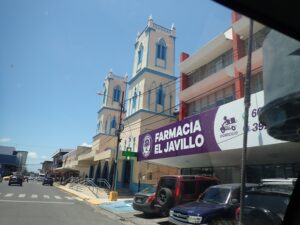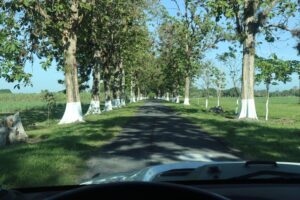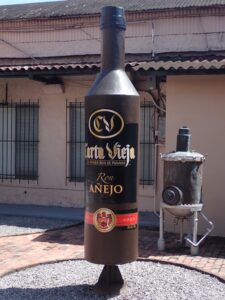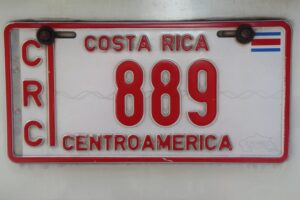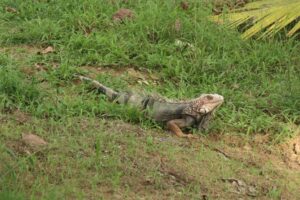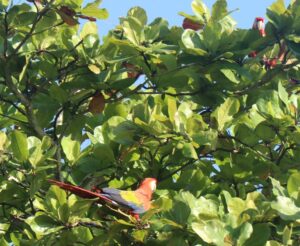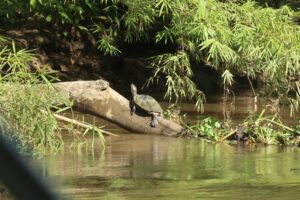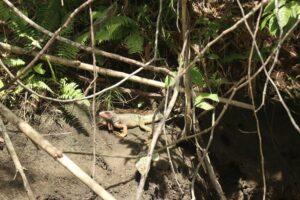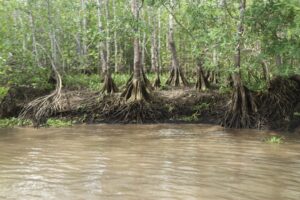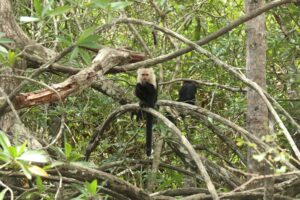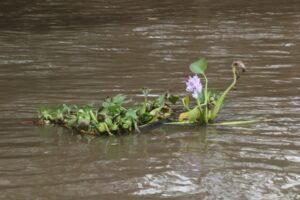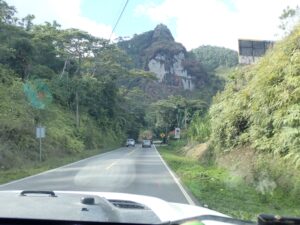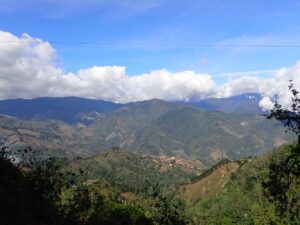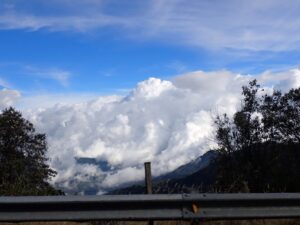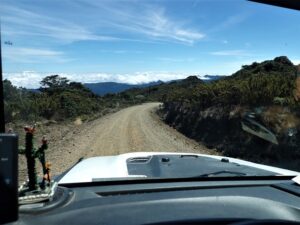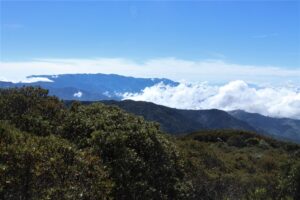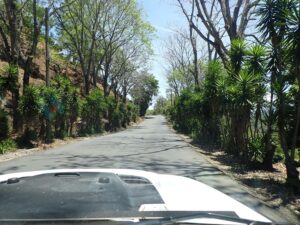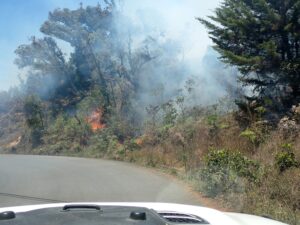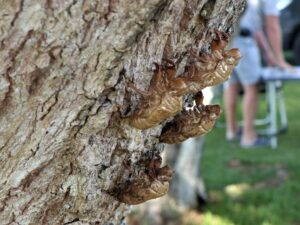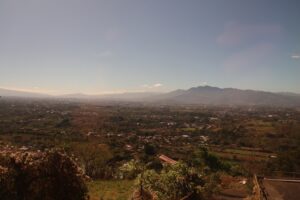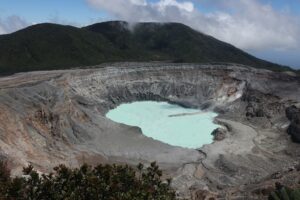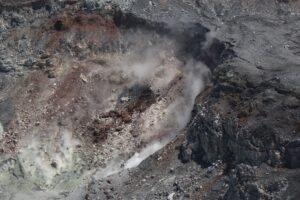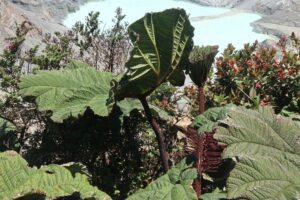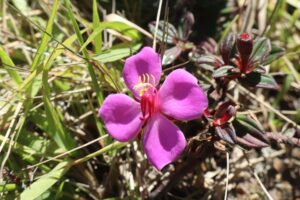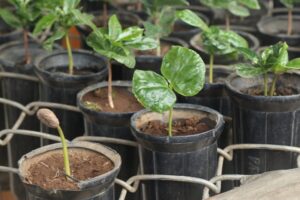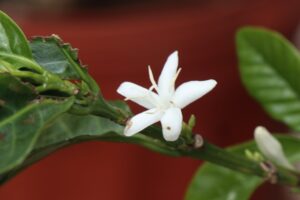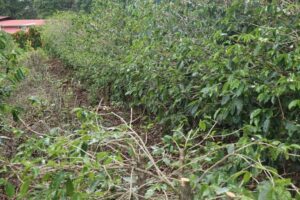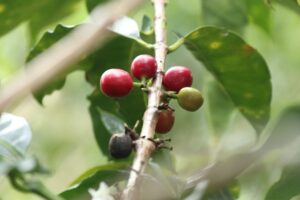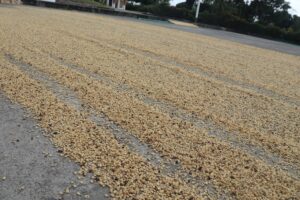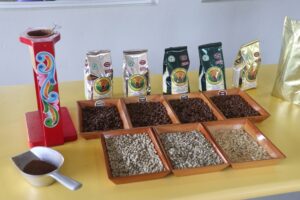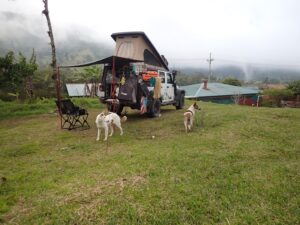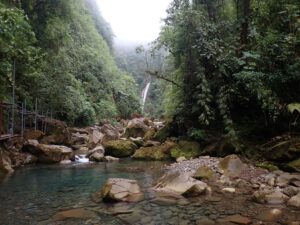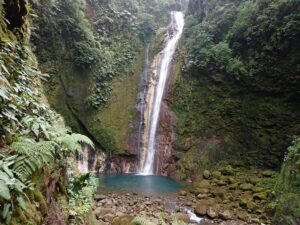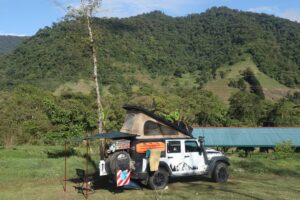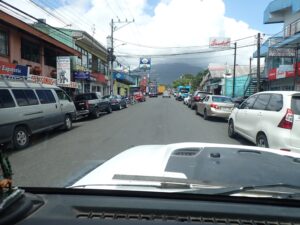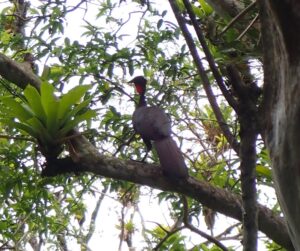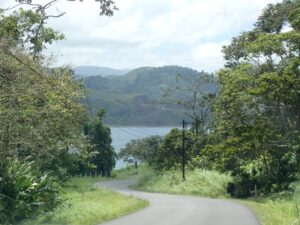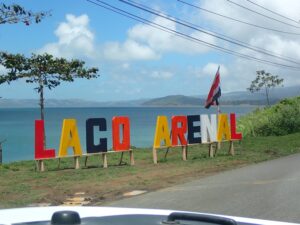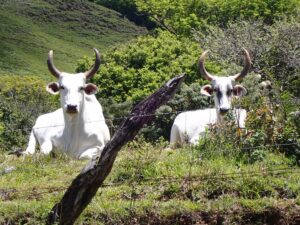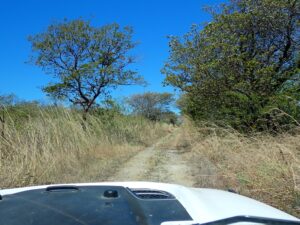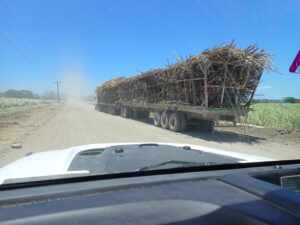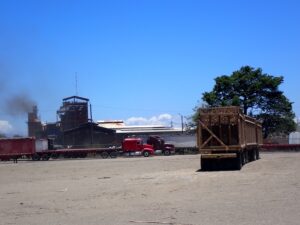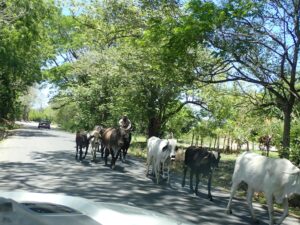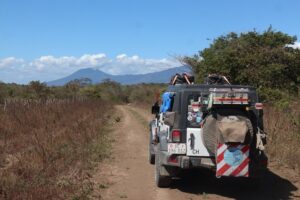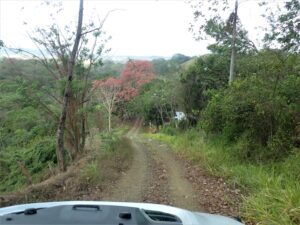>Translated with www.DeepL.com/Translator
(>Pictures at the bottom!)
….Panama – Costa Rica
With the exception of Panama and Costa Rica, all Central American countries were plunged into deep crises by domestic conflicts until recently. The consequences of these long-standing conflicts are still strongly felt today and can be seen everywhere. The countries suffered greatly from their own development and parallel societies formed almost everywhere. This was fertile ground for the formation of criminal organisations, and today these countries are fighting this almost insoluble problem. Personally, we also had the feeling that we were once again driving through developing countries: Next to mansions were entire village or city districts that looked more like slums than developed housing.
And, dirt and rubbish everywhere; whole mountains of rubbish lay along the roadsides, disfiguring their wonderful landscape. It is a pity that the people concerned do not react a little more sensitively to this and blame the state for it, but at the same time dump their rubbish over the roadside. Whether it comes with education or from the people themselves; where people are educated, it was usually much cleaner than in areas where mainly the indigenous population is at home. Costa Rica abolished the army in 1949 and used the money freed up for education and health; the fruits of this decision can truly be seen and felt today.
Back to our road trip, which finally resumed in Panama: After thorough preparation for our onward journey, we followed our group a day later on the “Panamericana” in a northerly, or westerly direction.
But no sooner had we left the shelter of the Panama Canal than we were confronted with the local traffic chaos for the first time. The bridge that leads across the canal from Panama City in a westerly direction was still flowing, but then traffic came to a standstill before the next larger town. Perhaps also a sign of the past transport policy, where the railway has been shut down and today everything moves on the roads; whether donkey carts, buses and over-long road trains up to scrap cars.
Soon we were “fed up” with this busy road, turned off and sought our luck on the back roads through the mountains. It was also an immersion into another world, where many things still have a different value. Unfortunately, we paid too little attention to the customs of Panama, where large landowners or a certain class of people can claim whole areas for themselves and block them off over a wide area. The area is guarded with a lot of barbed wire and corresponding security, and we were not allowed to continue our journey. We could not convince the respective guards that this road is marked on our map as a public road and that we would like to drive through. Well, other countries – other customs.
As we continued to cross Panama, we kept looking for roads that led away from this busy “Panamericana”. So we kept reaching very sparsely populated areas along the mountain range that runs through the country from east to west. North of the “Cordillera Central” there was no chance for our jeep to make any progress in this jungle. In this jungle and the areas of the indigenous people groups, there were hardly any sensible road connections for us.
After the many ups and downs along the central mountains, we descended into the lowlands, where one village followed the next. Behind them were mostly extensive plantations of oil palms, or vast areas where the original forest had been cleared and herds of cattle now grazed; after all, the hunger for cheap meat must be satisfied.
Further west on our route, the oil palms and cattle gave way more and more to sugar cane, which is exported all over the world as a sweetener or processed locally into rum. Almost inevitably, we had to stroll through the halls of such a distillery and were very impressed by the pride of the distillers; after all, they make the best rum, which was almost missed out on during the subsequent tasting 😉
It was not far to the border crossing to Costa Rica, and patiently we learned the long waiting times at the various counters. What has long been a thing of the past in Europe is part of everyday life in Central America. Countless papers had to be filled out, and stamps at the various places were indispensable. If a stamp was missing, you had to start again from field one. Of course, there were almost always some kind of fees due and on top of that, our car liability insurance, which was actually valid throughout Central America, was suddenly no longer in order. For a lot of dollars, we got new insurance cover and wondered which minister might have had a hand in this.
After a few hours, our journey finally continued. Immediately, we had to interpret the new traffic customs correctly and keep to the appropriate speed limits. Foreigners are supposedly happy to be fined! As already mentioned, we were in the “Switzerland of Central America” and it was not only on the road that the discipline was truly noticeable. We were also looking in vain for the already familiar sight of entire rubbish dumps at the side of the road. Wow, what a beautiful Coata Rica!
But here, too, the oil palm plantations stand along the road and monocultures for agricultural products usually have bad effects not only for nature. In a bioreserve, wedged between oil palms, we went on a boat tour, hoping to observe some wildlife from a safe distance. Apart from monkeys in the trees, this safari was more like a botanical excursion through the lower reaches of a stream. The guide told us that all the fertilisers and sprays were not without problems and they saw the creeping destruction almost every time they went boating.
The humidity along the Pacific Ocean was very high and the evening insects also gave us a hard time with their bites. The parrots (macaws) in the trees could not change our minds, although one could watch these wonderful animals for hours. So we left the dream beaches, climbed up to the “Cordillera de Talamanca” and enjoyed a pleasantly fresh night at an altitude of 3’000 metres.
After the restful night, we continued our journey through the hilly mountainous country towards “San José”. Coffee cultivation is the main source of income in this area and is correspondingly labour-intensive on the steep slopes, which is reflected in the respective sizes of the villages. Below 1,300 metres, coffee cultivation is no longer possible, and in the immediate vicinity of the capital, normal farms for milk and meat production follow.
“We left San José on the left, but visited the nearby active volcano Poás and a larger coffee plantation. During these tours, we were very well looked after by a local guide and were given a lot of interesting information about the country as well as the current customs. It was very astonishing to hear that Costa Rica is increasingly turning away from the USA as a buyer of agricultural goods and counting Europeans more and more among its customers. For the Americans, everything allegedly revolves around the price, but for the European customers, ecology is also an issue and the higher price is accepted accordingly.
Over countless elevations, hills or around volcanoes, we headed for the “Laguna de Arenal”. A wonderful area that could actually be somewhere in the foothills of the Alps and even the grazing cows underlined this impression. Hikes to the volcanoes or thermal baths tempted us in almost every village and the beautiful landscape is exploited accordingly by the tourism industry. Prices in Costa Rica are already high, but up here in the wild jungle they are probably – due to the altitude – even higher.
Our days were soon numbered, a last camp on a finca took us close to the Nicaraguan border. For this border crossing, the tour guide urged us to leave early so that we could still continue our journey during daylight. But how could it have been otherwise; we were again the last to leave the finca and chose not the fastest way to the border station, but the most direct through the forest. So we only saw half of the long convoy of trucks on the road. Truck drivers have to plan up to four days for this border! With our hazard lights on, we overtook the whole column on the opposite lane and drove directly in front of the border building for the exit from Costa Rica.
While the Nicaraguan flag was waving in the wind on the other side of the border fence, we practised waiting patiently again. Maybe we will make it until sunset…..
Chantal & Tom/April 2023
>Translated with www.DeepL.com/Translator

